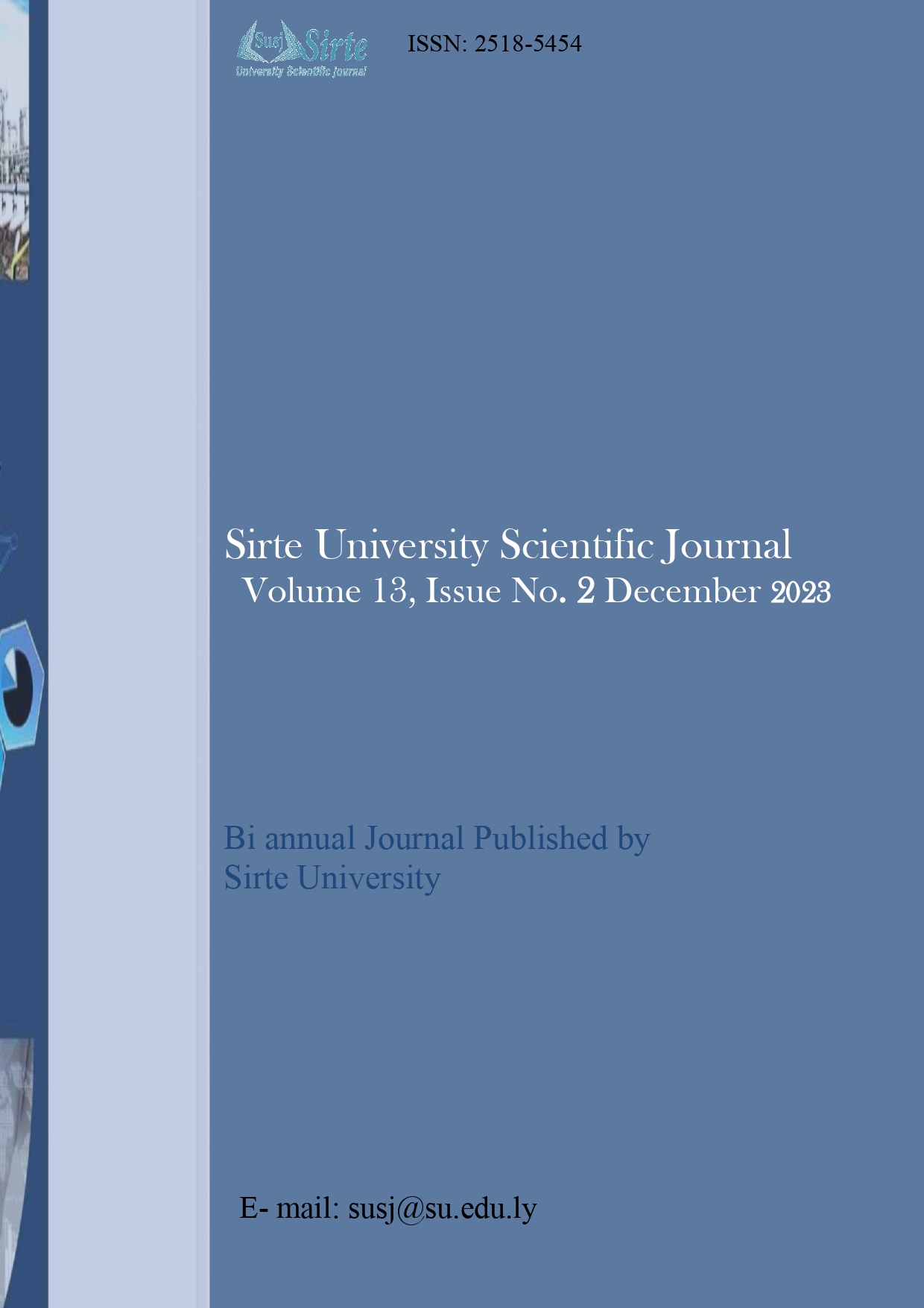Experimental Study of Faults Arising on a DC Brushed Shunt Motor
DOI:
https://doi.org/10.37375/susj.v13i2.2502Keywords:
DC motor, DC motor modeling, Faults Occurring, Dc Fault detectionAbstract
Faults do sometimes occur in direct current (DC) electrical machines result in a very costly downtime and safety concerns. Brushed type DC motors are cheap and easy to install, thus maintain a significant presence in the automotive, aerospace, and home appliance industries. Despite the popularity, faults occur which make analysis and detection of faults very important. Since there are many types of machines and each type has its own behavior when a fault developed, so that only with considerable experience can the cause of failure be correctly identified from the symptoms alone. In this paper a various faults mechanisms of brushed DC shunt motor are presented experimentally. Experimental results demonstrated how DC shunt motor are affected by various faults during the operation. The experiment results can be used to prove the validity of any method for modelling based fault diagnosis, detection and fault confirmation in DC motor, especially in the laboratories that have shortage in equipment.
References
References
C. M. Ong, “Dynamic simulation of electric machinery using MATLAB/SIMULINK” Upper Saddle River, NJ, USA: Prentice hall PTR, 1998.
V. Perelmuter, “Electrotechnical Systems: Simulation withSimulink® and SimPowerSystemsTM”, CRC Press, 2012.
K.-K. Nguyen and T.-T. Nguyen, “ The sensorless control system for controlling the speed of direct current motor,” Indonesian Journal of Electrical Engineering and Computer Science, vol. 16, no. 3, pp. 1171-1178, 2019.
Agrawal, B. Prasad, V. Viswanathan, and S. K. Panda, “Dynamic modeling of variable ballast tank for spherical underwater robot”. In 2013 IEEE International Conference on Industrial Technology (ICIT), pp. 58–63, 2013.
S. N. Al-Bargothi, G. M. Qaryouti, and Q. M. Jaber, “Speed control of DC motor using conventional and adaptive PID controllers”. Indonesian Journal of Electrical Engineering and Computer Science, vol. 16, no. 3, pp. 1221-1228, Vol. 16. No. 3, pp. 1221-1228, 2019.
P. J. Tavner, B. G. Gaydon, and D. M. Ward, “Monitoring generators and motors”. Proc. Inst. Elect. Eng. B, vol. 133, no. 3, pp. 169–180.
Abbas A. Wahab, N. Fatimah Abdullah, M. A. H. Rasid “Mechanical Fault Detection on Electrical Machine: Thermal Analysis of Small Brushed DC Motor with Faulty Bearing”. MATEC Web of Conferences 225, 05012, 2018.
Todd D. Batzel, Nicholas C. Becker, and Mihai Comanescu, “Analysis of Brushed DC Machinery Faults With Coupled Finite Element Method and Equivalent Circuit Model”. Proceedings of the 2011 IAJC-ASEE International Conference ISBN 978-1-60643-379-9, 2011.
Masoud Hajiaghajani, Hamid A. Toliyat, and Issa M. S. Panahi, “Advanced Fault Diagnosis of a DC Motor”. IEEE Transaction on energy conversion, Vol. 19, No. 1, pp. 60-65, 2004.
D. Fussel and P. Balle, “Combining neuro-fuzzy and machine learning for fault diagnosis of a DC motor”. In Proc. Amer. Contr. Conf., vol. 1 pp. 37–41, 1997.
Z. Glowacz, and A. Zdrojewski, “Mathematical Modeling of Commutator DC Motor in Failure Conditions”. In 5th IEEE International Symposium on Diagnostics for Electric Machines, Power Electronics, and Drives (SDEMPED), pp. 1-5, 2005.
Z. Glowacz, and A. Zdrojewski, “Diagnostics of Commutator DC Motor Basing on Spectral Analysis of Signals”. In IEEE International Symposium on Diagnostics for Electric Machines, Power Electronics, and Drives (SDEMPED), pp. 497-500, 2007.
Vijaylakshmi S. Jigajinni, “Simulation of Incipient Fault Detection, Confirmation and Diagnosis Using Kalman Filter”. International Journal of Science and Research (IJSR), Vol. 3 Issue 8, pp. 1846-1850, 2014.
W. Leonhard, “Control of Electrical Drivers”. Springer, Berlin, Heidelberg, NewYork, pp. 51-63, ISBN 3 540-41820-2, 2001.





